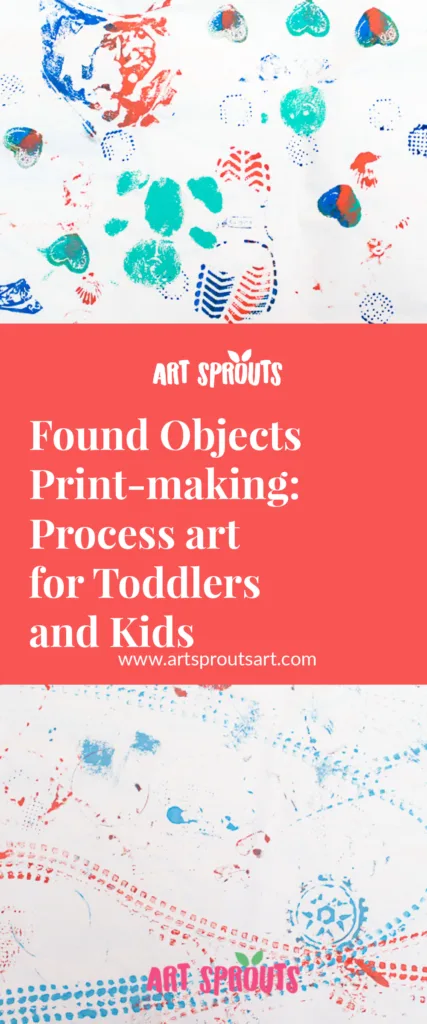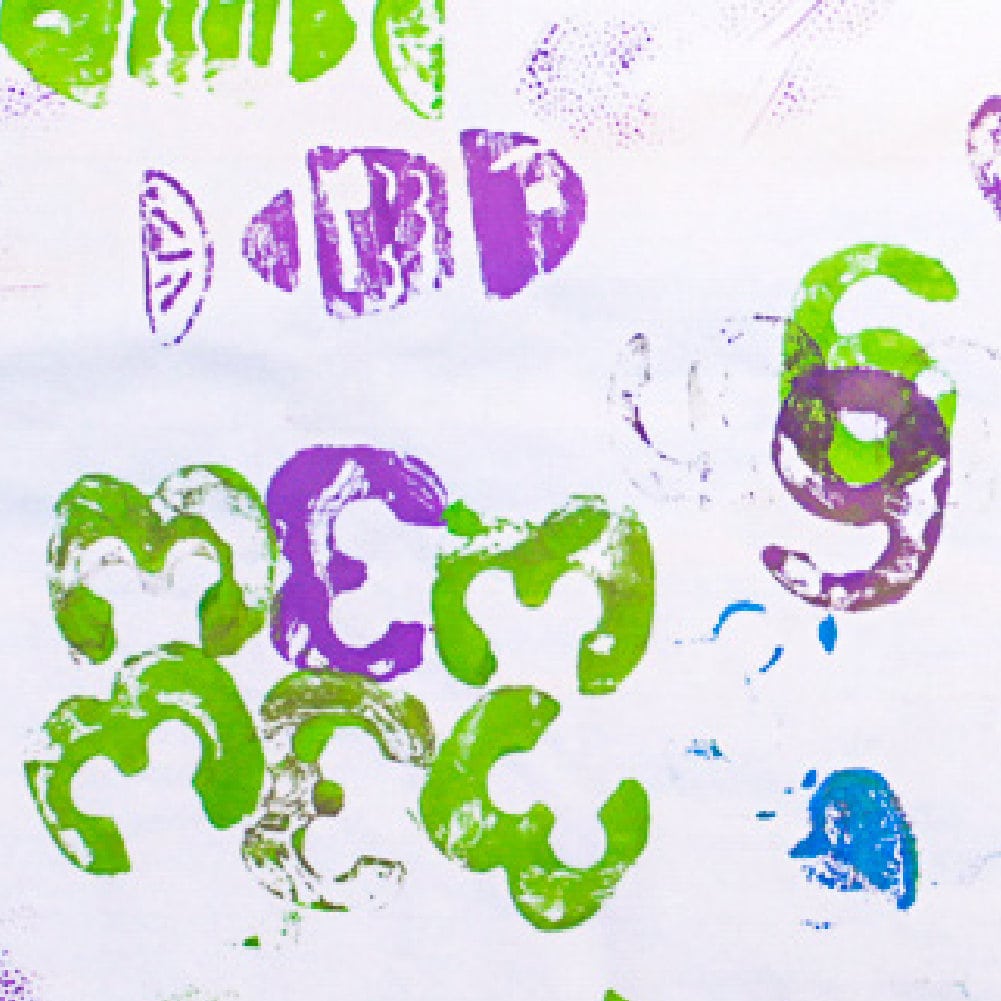Printmaking has long been a cornerstone of our studio’s curriculum, perhaps influenced by my time in China, the birthplace of block printing and paper-making. Embracing a patient and optimistic approach, we’ve successfully introduced intricate techniques like block carving and printing to children as young as 6.
Still, to this day, one of my aspirations is to put together a comprehensive printmaking guide for both teachers and parents. Fingers crossed, with a sprinkle of luck and a dash of determination, that day might just be around the corner!
For now, let’s talk about a simpler version that’s perfect for very young children: printmaking with found objects!
As often, I once again like to use Xuan paper, a thick and sturdy paper that is ideal for molding around larger three-dimensional objects.
Flatter items, like bubble wrap or sliced vegetables, yield excellent results on firmer surfaces such as cardboard or watercolor paper as well, but more complex objects, such as toys or Lego bricks, can present some challenges. But don’t despair; it’s all part of the exploration process!
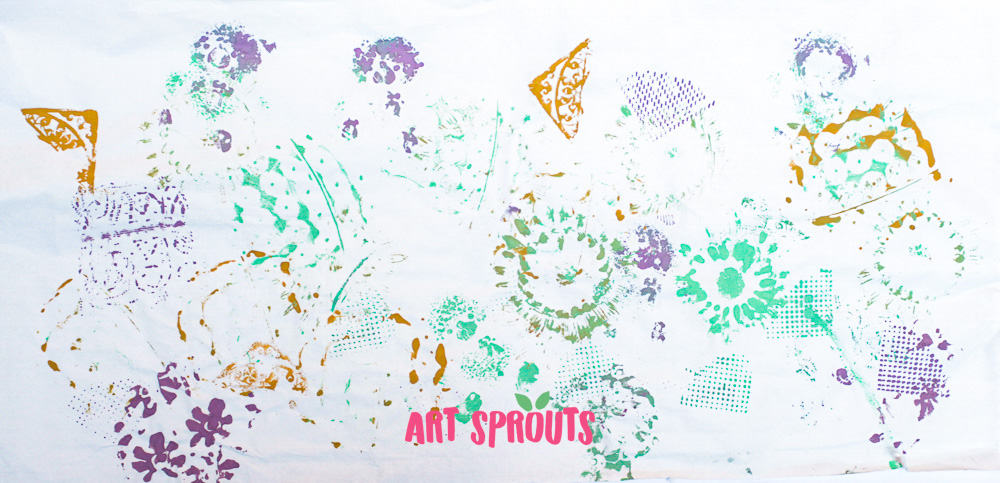
Printmaking with found objects for kids
Materials Needed
- Everyday bbjects such as bubble wrap, small toys, marbles, vegetables (celery stalks, bell pepper, lotus roots), fruits (apples, lemons), etc.
- Gouache paint
- Brushes to apply paint
- Xuan Paper or any other paper support
- Plastic trays or containers to spread paint and dip objects
Instructions
- Set Up: Lay down the Xuan paper on a flat surface. Have your selected colors and brushes ready.
- Exploration Time: Begin by letting the kids explore the objects. Ask them a few engaging prompts, such as: “How does the celery feel? What shape is the toy car? Can you feel the bubbles on the bubble wrap?”
- Paint Application: Help the kids apply paint onto their chosen objects using the brushes.
- Press & Print: Gently press the painted object onto the Xuan paper. Then, lift it to reveal the magic! Keep asking questions about the texture and print. “How do they compare?” “Is this what you expected to see?”
- Experiment and Combine: Encourage kids to try different objects to discover new textures and motives.

Clean-up routine
- Brush and printing tools Cleaning: Once the children complete their masterpieces, guide them in taking their brushes and printing tools to the sink. Show them how to rinse the brushes thoroughly and how to clean their objects. This not only teaches responsibility but also respect for their tools and materials.
- Tidy-Up Time: Provide mops or cloths for wiping up any spills on tables and floors. Encouraging children to clean up their own messes fosters independence and care for their environment!
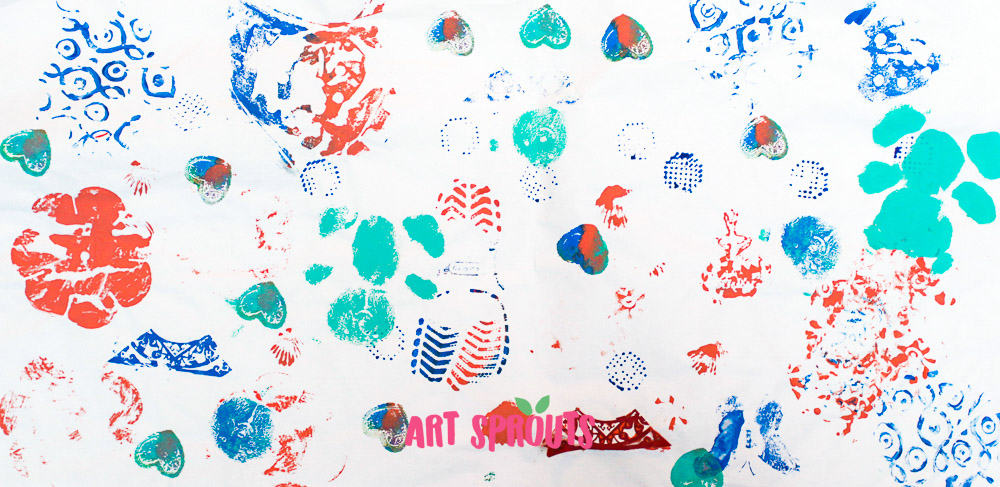
Tips and Tricks:
- Limit Options: To help kids focus on exploring shapes and textures, limit the options. Start with two colors and a couple of objects. Group items by type, like vegetables with vegetables, and toys with toys.
- Experiment with Pressure: Some objects may need a firmer press, while others will need a gentle touch. Guide the children to experiment with this.
- Action and repetition: Some objects, like toy cars and marble, can be “driven” across the paper for a continuous print. Others, like strings and rubber bands, can be dropped on the paper to create unpredictable shapes!
- Take it further: Older children may use their prints to create textures to use in larger projects and artworks. One great inspiration could be Surrealist artist Max Ernst and his invention of the frottage technique!
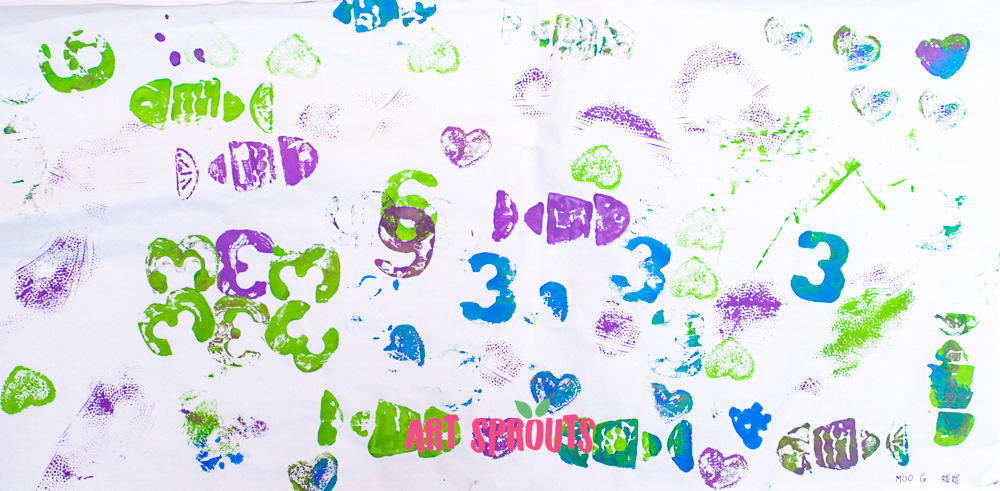
Have you tried printmaking with found objects? Leave your comment or suggestion in the comments below!
Save for later:
